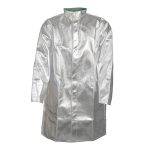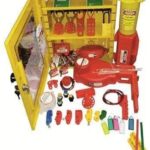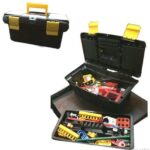Your list is empty, add products to the list to send a request
How Can I Check for a Gas Leak at Home?

31
Jul
Gas is a silent danger. It powers your stove, geyser, or heating unit every day, but when it leaks, it becomes one of the biggest fire and health hazards in your home.
That’s why knowing how to check for a gas leak is more than a safety skill—it’s a responsibility. And with tools like the True Safe gas leak detector, checking for leaks is simpler, faster, and far more accurate than ever before.
In this blog, you’ll learn how to check for gas leaks at home, the signs to watch out for, safe methods for testing, where to install your detector, and how to use it correctly.
Why Gas Leak Detection Matters at Home
Gas leaks don’t always have a smell.
They don’t always make a noise.
But if left undetected, they can cause:
- Explosions and fires
- Carbon monoxide poisoning
- Sudden health issues like headaches, dizziness, or nausea
- Long-term damage to your home and safety systems
Whether you use LPG, PNG, or CNG, your first line of defence should be awareness. And your second line? A reliable gas leak detector, like the True Safe gas leak detector, specifically built for Indian homes and conditions.
Common Signs of a Gas Leak
Before we get into detection tools, watch for these warning signs:
- Rotten egg smell (added by gas companies to signal leaks)
- Hissing or whistling sound near gas appliances or pipes
- Sudden headache or dizziness indoors
- Dead houseplants near gas lines
- Higher gas bills without increased usage
If you suspect a leak, take immediate action. Don’t light a match, switch on lights, or use mobile phones near the suspected area.
How to Check for a Gas Leak at Home
- Visual Inspection of Gas Connections
Start with a manual check of your gas stove, cylinders, regulators, and pipelines. Look for:
- Loose or rusted connections
- Cracks or wear on pipes
- Signs of corrosion or moisture accumulation
If you spot damage, turn off the gas immediately and ventilate the room.
- Use the Soap Water Test
This is a quick DIY method for small areas:
Steps:
- Mix a little dish soap with water in a spray bottle
- Spray the mixture on the suspected area (pipe joints, valve connections)
- If bubbles form, it indicates a gas leak
- Use a Gas Leak Detector (Most Reliable Method)
A gas leak detector is your best long-term protection tool.
Why use a detector?
- Instant detection of leaks
- Works 24/7
- Loud alarm for quick response
- No guesswork involved
The True Safe gas leak detector can sense leaks from LPG, PNG, and CNG, making it versatile for homes, hostels, and even commercial kitchens.
Where to Place a Gas Leak Detector in Your Home
Proper placement is just as important as having the device.
- LPG (heavier than air): Install 30 cm above the floor, near gas cylinders or cooktops
- PNG and CNG (lighter than air): Install 15–30 cm below the ceiling, near pipelines or appliances
Avoid areas with strong airflow (near fans or windows), and don’t place it directly above stoves.
Best locations include:
- Kitchen
- Utility room
- Basement (if gas geysers or appliances are present)
- Near gas cylinders
How to Use the True Safe Gas Leak Detector
Using the detector is simple and straightforward:
- Mount it on a wall near the gas source
- Plug it into a nearby electrical socket
- Turn on the power—LED indicators will show it’s active
- Wait for calibration (initial warm-up takes ~2 minutes)
- Test it monthly using the test/reset button
- If gas is detected, it emits a loud alarm (≥ 85 dB) instantly
It’s designed for low power consumption, has a microprocessor for precision sensing, and includes LED alerts for power, fault, and gas leak status.
Maintenance Tips for Long-Term Use
- Clean the vents with a dry cloth once a month
- Check the power connection weekly
- Test alarm functionality using the test button
- Replace the unit if it’s damaged or past its 5-year lifespan
Benefits of True Safe Gas Leak Detector
- Compatible with LPG, PNG, and CNG
- High-decibel 85 dB alarm
- LED indicator lights for quick reading
- Microprocessor-based sensing for accuracy
- Wall-mountable and compact design
- BIS and CE certified for safety standards
- Affordable and built for Indian climates
Frequently Asked Questions
1. Can a detector detect a gas leak?
Yes, a gas leak detector is specifically designed to sense gas concentrations in the air. When levels reach a certain point, it triggers an alarm. The True Safe gas leak detector is sensitive to LPG, PNG, and CNG, making it ideal for home and commercial use.
2. Where to place a gas leak detector?
- For LPG: 30 cm above the floor
- For PNG/CNG: 15–30 cm below the ceiling
Avoid placing it above cooking surfaces or near strong airflow zones.
3. How to use a gas leak detector?
- Plug it in and mount it near your gas source
- Let it calibrate
- The alarm will automatically sound when it detects a leak
- Use the test/reset button to check functionality monthly
- Follow the LED light indicators for power or fault status
Final Thoughts
Gas leaks aren’t something you want to discover too late. While manual checks are helpful, only a dedicated device can monitor continuously, 24/7.
The True Safe gas leak detector is a budget-friendly, efficient, and dependable choice for Indian homes that rely on LPG, PNG, or CNG.
Whether you’re cooking, using a geyser, or operating a small business, it gives you the peace of mind you need—and could save lives in an emergency.
Ready to protect your home and family from invisible gas dangers?
Get the True Safe Gas Leak Detector Now from Fire Supplies, and stay one step ahead of gas hazards. Install it. Forget it. Stay safe.



























